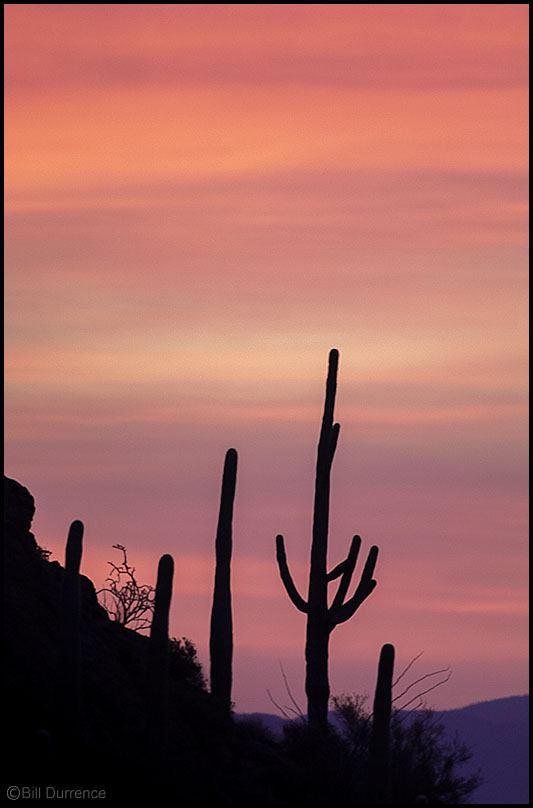Saguaro NP, AZ, 2000

Growing up in the exurban Savannah area, I lived in a world of green–lots of trees large and small, forests and tree farms–and blue–skies, and water from rivers to marsh to ocean. In the 1950s, my formative years, the morality tales of the day were disguised as western motif books, movies, and TV shows, most often scripted with a White Hat/Black Hat ethical simplicity. Maybe some of our complications today derive from a failure to teach ambiguity.
That sort of philosophizing, though, is from later in life, looking back. At the time, the lens of that genre was showing me something else, an alien landscape that was often red or purple or brown, with vast expanses of open space, and great variations in elevation, with supernatural flora. I was fascinated by the western landscape. I longed to see it, be in it.
Now, all these years later, I have had many opportunities to see much of it, in its many forms–deserts to buttes, canyons to mountains, Death Valley to Yellowstone, the Grand Canyon to the Tetons, Devil’s Tower to Custer’s last stand–and I am still fascinated by it, but the real experiences of it have taught me something the passive viewing could never have driven home. It can be a long way between water, even with a motorized vehicle and a multitude of gas station/convenience stores, and how dangerous and unforgiving a place it can be. Also, growing up in the high humidity of the southeast, I sometimes feel I must have grown hidden gills to adapt to breathing moisture. The result is that, in the arid air of the southwest, I can do about a week before my dry, cracking skin becomes rough and sometimes painful.
We all live with a point of view, and having that flipped upside down can be good for the soul, but a little bruising to the ego.
I was leading a small group photography workshop in Monument Valley, with a Navajo guide. As we chatted we discovered we had served in the military about the same time, me in the Army, he in the Marine Corps, based at Camp Lejuene, NC. He said he was glad to get out and get back home; I understand the draw of “home” no matter what or where, but I also heard some dislike of North Carolina in his comments, and asked why. He said, “Too many trees. Out here, I can see what’s coming from a long way off.”
I get that.
For more of Bill’s photographs, go to https://www.billdurrence.com/index

Sara Gump
Hi Bill,
I love your emails and am continuously impressed by your writing – your skill as a photographer is well- known, your gift of writing is a delightful addition’
bdurrence
Very nice compliment; thank you. I am cleaning up, and out, 1000s of old slides I’ve been dragging around in several big boxes for years. It’s a time-bomb loaded project. Every few slides, some shot will evoke a memory and I lose a half hour woolgathering. Just yesterday I was looking at outtakes from the banking, agriculture, resort, etc. advertising campaigns we worked on together back in the 70s. That was so much fun.